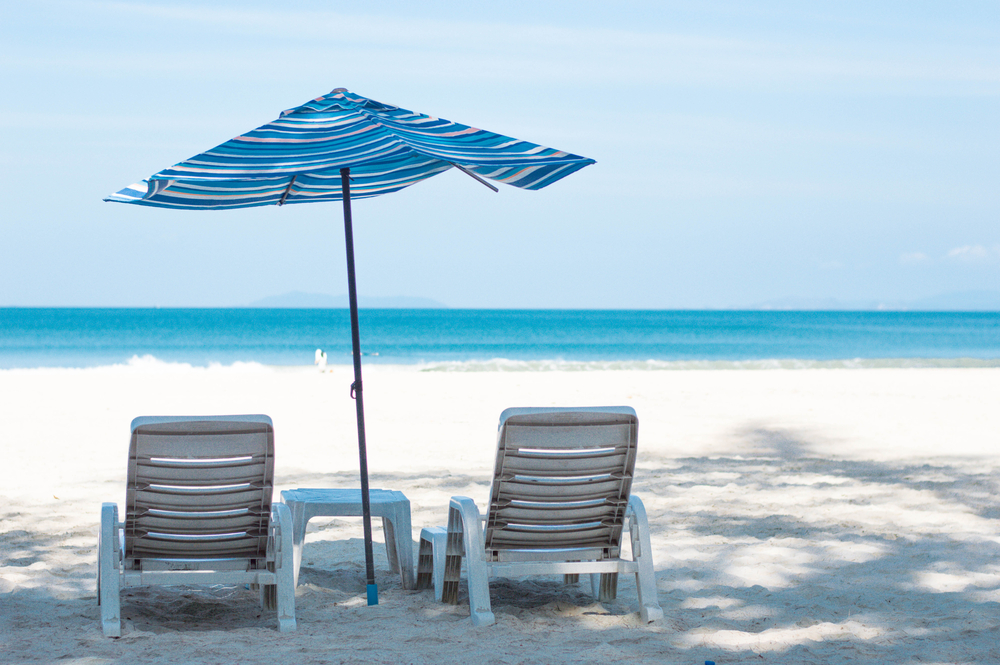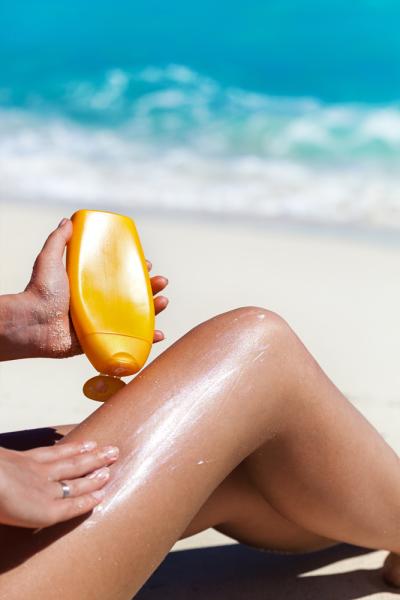Question: Should researchers even participate in a study, if the potential exists that the results they collect can benefit the company or industry that employs them?
This thought immediately comes to mind after reading the conclusion of a newly-released examination comparing the protective benefits of sunscreen and umbrella shade. We ask this because shouldn't one of the primary goals of any scientific study be that purposeful efforts are taken to minimize conflicts of interest, along with other factors that may cast doubt on the conclusions?
Apparently, that wasn't much of a concern for all – yes, all – six researches credited in the study, titled "Sun Protection by Beach Umbrella vs Sunscreen With a High Sun Protection Factor: A Randomized Clinical Trial." Published online this week in the journal JAMA Dermatology, the study concluded that "during 3½ hours of sun exposure, 78% of participants under shade from a beach umbrella developed a sunburn vs 25% of participants using sunscreen. Neither shade nor sunscreen alone completely prevented sunburn."
Now, this is not to say that the results – sunscreen is more effective than shade, when compared directly – are flawed or inaccurate. But right off the bat, it simply makes the reader wonder whether they might be. And that itself is a problem.
The study's concept is intriguing, and learning about how the trial was conducted was interesting and insightful. But then, at the bottom of the paper, we come to the "Conflict of Interest Disclosures." And here they are, verbatim:
"Dr. Ou-Yang and Ms. Meyer reported being employees of Johnson & Johnson Consumer Inc, the parent company of Neutrogena Corp and manufacturer of the sunscreen tested in this study. Dr. Jiang reported being an employee of Thomas J. Stephens & Associates, the independent testing laboratory that received compensation for conducting this study. Drs. Wang, Farberg, and Rigel reported serving as consultants for Johnson & Johnson Consumer Inc."
 It makes you wonder: Were these the only six researchers available?
It makes you wonder: Were these the only six researchers available?
The study, involving 81 participants on a sunny Texas day in August 2014, went as follows: 41 spent the 3 1/2 hour-stretch under a beach umbrella (moving periodically as the sun shifted to ensure complete coverage), while the other 40 wore SPF 100 and had no access to shade. All were positioned 36 yards from the water, and none were permitted to go in.
They were then checked for incidents of "sunburn on their bodies (face, back of neck, upper chest, arms and legs) about a day after sun exposure. ... The umbrella group had 142 sunburned areas," Dr. Ou-Yang wrote, "compared with 17 in the sunscreen group."
The results indicated that sun exposure comes from many directions, not just from overhead, and at the beach that can mean reflecting off the sand as well as the water.
Despite accepted knowledge of the FDA's findings that SPF 30 filters out 97 percent of UVB rays (while SPF 50 filters out just slightly more, 98 percent) and that there's no added protection for sunscreens above SPF 50, these 50-plus products continue to be marketed to consumers. And the only product tested in this study was Neutrogena Ultra Sheer SPF100+.
"Consumers would likely assume that a product with an SPF value higher than 50 provides greater protection than a product with an SPF value of 50 (e.g., assume that an SPF 80 sunscreen provides greater protection than an SPF 50 sunscreen)," the FDA wrote in 2011, on page 35674 of the Federal Register. "However, we lack evidence that a product with an SPF value higher than 50 provides additional clinical benefit compared to a product with an SPF value of 50."
When it comes to price, Neutrogena's SPF 100+ ($11.49, on its own website) costs more than it's SPF 55 product ($10.49). And given the FDA's view that the more expensive formulation provides no added protection, why did researchers decide to test just one sunscreen – and make that product in particular, the one they chose?
That's just another curious element of the study.
In the end, while the results of the study dovetail nicely with what we already know about effective sun protection – that sunscreen, and shade, and hats/clothing should be used together – all told the takeaway is less than satisfying.
Half baked results, if you will.




